Loading Animated FBX Props to Unreal
After you have separately exported your geometry and animation FBX files,
you need to adjust specific settings when you want to import them into Unreal,
especially when you have prepared multiple animations for loading.
Loading the Geometry FBX File
-
Import the geometry file by clicking the Import button.
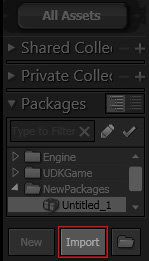
-
In the Option section of the Import panel,
adjust the settings as shown in the illustration below:
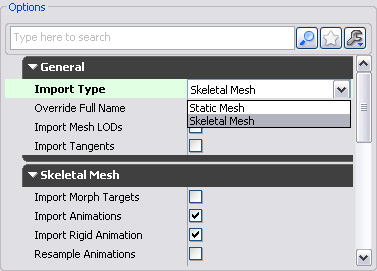
-
Import Type: Select the Skeletal Mesh from the drop-down list because
the geometry exported from the 3DXchange is exported with
the GameEngine - Unreal preset (in which the Auto Skin Rigid Mesh is activated).
-
Import Animations and Import Rigid Animation: Both of these check boxes
must be activated.
-
Click OK button to import the geometry. The model,
materials, textures and animation set (currently empty) will be loaded as well.
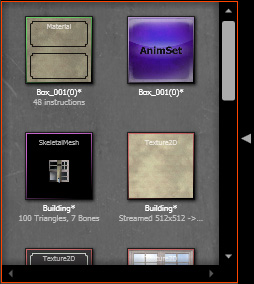
Loading the Animation FBX Files
-
Double click on the model in the content library to launch the AnimSet Editor.

-
Select the animation set that belongs to this model in the drop-down list
in the Anim tab.

If you can not find the set, then execute the File >> New AnimSet... command to create one.
-
Execute the File >> Import FBX Animation command. Multi-select the
animation files exported from 3DXchange and click Ok button to load them.
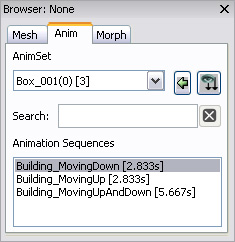
-
Select either one of the animations in the list and click the play button to view the result.
Solution for Motionless Issue
Sometimes, after the animations are loaded and you click the play button, the model remains motionless. If you encounter this
issue, then follow the steps below to resolve the problem.
-
In the Properties pane, switch to the AnimSet
tab and deactivate the Anim Rotation Only box.
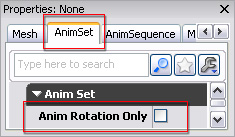
-
You will see a warning message highlighted in red in the preview window.
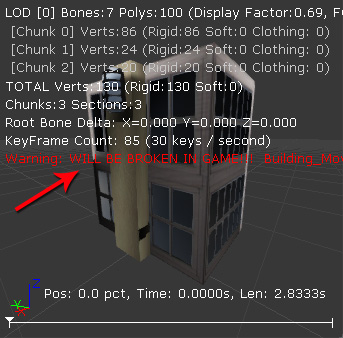
The message means that although the model is able to animate after this box is deactivated, you cannot
build it into the game.
-
Execute the Animation Compression >> Animation Compression Settings command to launch
panel.
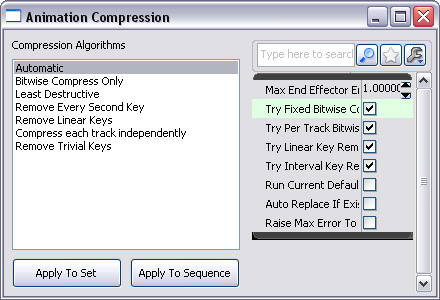
-
If your model is a bone-skinned model, then select the Automatic algorithm. If not,
then select the Bitwise Compress Only one.
-
Click the Apply To Set to compress every animation in the animation set. Click the Apply To Sequence
to individually compress the animations in the AnimSet.
After these modifications, the model is ready to be loaded into the scene.
|
Note:
|
-
If the length or the width of any one of the textures does not equal to 2 to the power of n (unit: pixel),
then loading the model with the texture into Unreal will cause the faces that are
mapped with the texture to turn white.
You must manually resize the texture before you export the model from 3DXchange.
-
If you find any texture transparency or miss-mapping issues, then you need to double click on the corresponding material
to launch the material editor for further material adjustments manually.
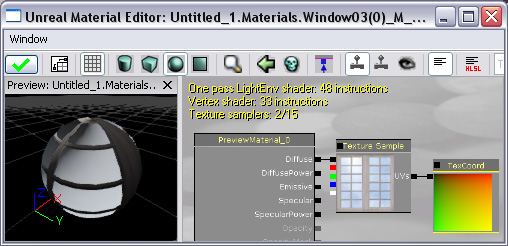
|









